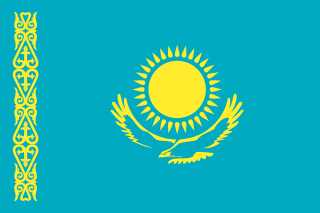
Nordic combined is a winter sport in which athletes compete in cross-country skiing and ski jumping. The Nordic combined at the Winter Olympics has been held since the first Winter Olympics in 1924, while the FIS Nordic Combined World Cup has been held since 1983. Many Nordic combined competitions use the Gundersen method, where placement in the ski jumping segment results in time (dis)advantages added to the contestant's total in the cross-country skiing segment.

Ski jumping is a winter sport in which competitors aim to achieve the farthest jump after sliding down on their skis from a specially designed curved ramp. Along with jump length, competitor's aerial style and other factors also affect the final score. Ski jumping was first contested in Norway in the late 19th century, and later spread through Europe and North America in the early 20th century. Along with cross-country skiing, it constitutes the traditional group of Nordic skiing disciplines.

Germany competed at the 2002 Winter Olympics in Salt Lake City, United States. In terms of gold medals, Germany finished ranking second with 12 gold medals. Meanwhile, the 36 total medals won by German athletes were the most of any nation at these Games, as well at any Winter Olympics, until this record was broken by the United States at the 2010 Winter Olympics.

Japan competed at the 2002 Winter Olympics in Salt Lake City, United States.

Japan was the host nation for the 1998 Winter Olympics in Nagano. It was the second time that Japan has hosted the Winter Games, after the 1972 Winter Olympics in Sapporo, and the third time overall, after the 1964 Summer Olympics in Tokyo.

Norway competed at the 2002 Winter Olympics in Salt Lake City, United States. The nation enjoyed its best ever results in gold medals, most notably in the biathlon events, when Ole Einar Bjørndalen swept all four gold medals.

Finland competed at the 2002 Winter Olympics in Salt Lake City, Utah, United States. The nation won all Nordic combined events, most notably Samppa Lajunen, in the individual events.

The Unified Team at the 1992 Winter Olympics in Albertville was a joint team consisting of five of the fifteen former Soviet republics: Russia, Ukraine, Kazakhstan, Belarus and Uzbekistan that made a decision to collaborate and created a united team. The Unified Team's only other appearance was at the 1992 Summer Olympics in Barcelona. It competed under the IOC country code EUN.

Ski jumping has been included in the program of every Winter Olympic Games. From 1924 through to 1956, the competition involved jumping from one hill whose length varied from each edition of the games to the next.

France was the host nation for the 1992 Winter Olympics in Albertville. It was the third time that France had hosted the Winter Olympic Games, and the fifth time overall.

Norway competed at the 1998 Winter Olympics in Nagano, Japan.

Switzerland competed at the 1992 Winter Olympics in Albertville, France. Nicolas Bochatay, a member of the delegation, was to represent the country in the speed skiing finals, but he was killed in an accident on the morning of the day of the competition he was to compete in.

Switzerland competed at the 1998 Winter Olympics in Nagano, Japan.

Switzerland competed at the 2002 Winter Olympics in Salt Lake City, United States.

Finland competed at the 1992 Winter Olympics in Albertville, France.

Germany competed at the 1992 Winter Olympics in Albertville, France. It was the first time that the nation had competed at the Olympic Games following reunification in 1990 and for the first time as a single nation since 1936. Previously, West Germany and East Germany had sent independent teams to the Games.

Germany competed at the 1998 Winter Olympics in Nagano, Japan.

Belarus competed at the 2002 Winter Olympics in Salt Lake City, United States.

Kazakhstan participated in the 2010 Winter Olympics in Vancouver, British Columbia, Canada. Kazakhstan was represented by 37 athletes in eight sports. Elena Khrustaleva won the country's only medal- a silver in the 15km individual biathlon.

Xu Mengtao is an Olympic Champion Chinese aerial skier. She has 27 World Cup victories and an Olympic Gold. She is also the current World Cup leader and became the first Chinese woman to win an Olympic gold in the Aerial Ski event during her fourth Olympics at the age of 31. She was one of Team China's flag bearers, at the 2022 Beijing Winter Olympic's closing ceremony.















